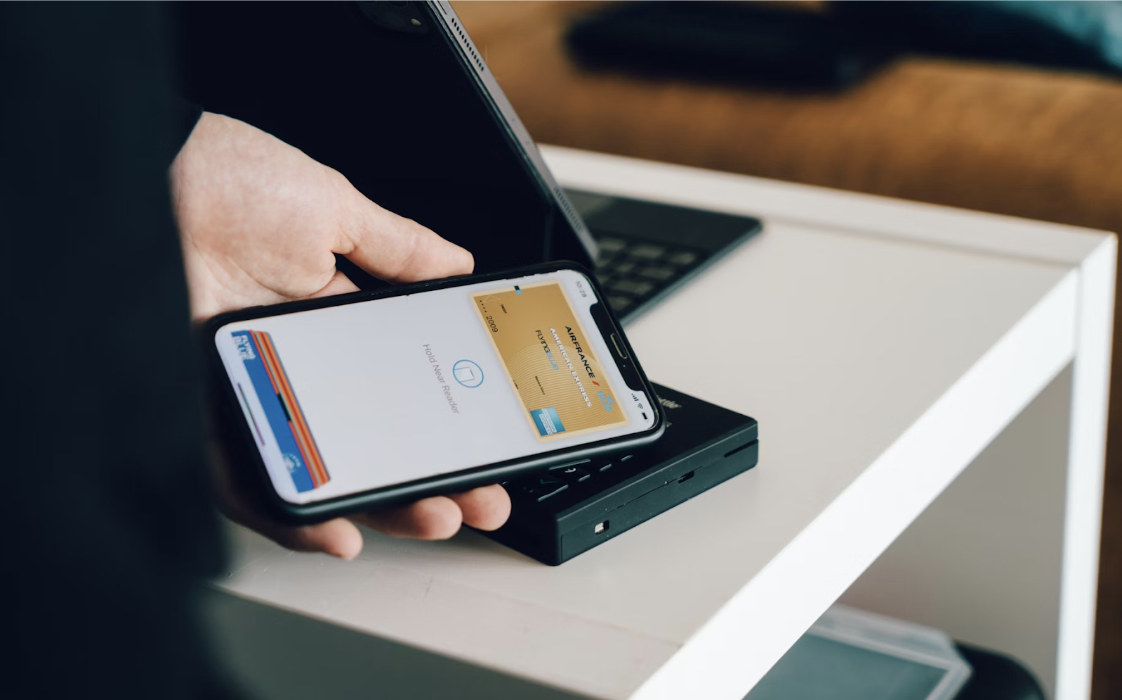Do you own a digital wallet? If you do and you’re not making strides to protect it, it’s time for a change.
Digital payments are now becoming the norm. Because thieves and crooks will always be a part of our society, threats to your hard-earned cash have evolved. Malicious figures are now going after digital wallets.
How do you keep your digital wallet safe from common threats? This guide addresses that and more.
Is Your Digital Wallet at Risk?
Now that 75% of payments made worldwide are digital, we have the power and convenience to make payments and receive money quickly. All it takes is a digital wallet account, and your phone is now a mode of cash exchange.
Still, like any other aspect of your digital life, your digital wallet is at risk. This risk comes from various sources. As we become more reliant on digital solutions, we need to build healthy habits. That applies more specifically to personal finance management and digital wallet security.
Implementing robust security measures to mitigate common digital wallet risks is crucial. We’ll dive into specific best practices below (so keep reading), but the overarching attitude should come first. Digital wallet users must practice vigilance against phishing attempts and scams.
Choosing reputable digital wallet providers is another essential step. That’s why we highly recommend apps like Jeton. Its advanced security features and insurance against unauthorized transactions can further protect your digital money.
While your digital wallet is at risk, taking proactive steps and having greater awareness can significantly reduce this risk. We’ll look into these next.
Common Digital Wallet Risks
Digital wallets face several risks. Each presents unique challenges and potential repercussions for users. Let’s look at some of the most common:
1) Malware
Malware poses a significant risk to digital wallets. Malicious software can infiltrate a device through seemingly benign downloads or websites. These programs steal sensitive information such as passwords, financial data, and personal details stored within digital wallets.
Cybercriminals then use this information to conduct unauthorized transactions or sell it on the dark web. Users can combat malware risks by updating their software. Avoid downloads from untrusted sources and employ comprehensive antivirus solutions.
2) Phishing
If you’ve heard of phishing attacks recently, they’re on the rise. This threat targets the user’s credentials through deceptive emails or messages. They often act as legitimate institutions or services and convince you to give up card information, logins, etc.
These communications usually urge users to enter their digital wallet details on spoofed websites. They’ll do that by informing you that you won a contest, got a job offer, need to update password information and many other tactics.
The psychology behind phishing tactics is complex, relying heavily on the manipulation of emotions and perception. Psychology professionals are examining these methods to better understand how individuals fall for phishing schemes and what mental triggers lead to lapses in judgment.
People with psychology careers are trying to understand the tactics these scammers use. Some psychological tactics to watch out for include fear of missing out or being blind to threats because of excitement. Avoid emotional responses when dealing with digital transactions and account management. Research shows that awareness of common emotional triggers can help users identify scams more effectively, strengthening cybersecurity efforts.
3) Fraud
This type of threat includes a broad range of deceitful activities aimed at unlawfully getting your money or information. This can consist of:
- Unauthorized use of someone’s digital wallet
- Scams promising non-existent rewards
- Manipulating transaction details to siphon off funds
To protect against fraud, users should monitor their transaction history regularly and use the security features offered by their digital wallet providers, like transaction alerts.
4) Identity Theft
Identity Theft occurs when cybercriminals use stolen personal information from digital wallets to impersonate the victim. Often, they open new accounts, buy products, ask for money or payment, or commit crimes in the victim’s name, which can damage the victim’s reputation and credit score.
5) Account Takeover
Hackers perform account takeovers by gaining unauthorized access to digital wallets, often by exploiting weak or reused passwords. They then drain the fund’s accounts or make unauthorized purchases. Sometimes, they will lock out the legitimate user for a ransom amount.
Use strong passwords to avoid this scenario. You can also use two-factor authentication and caution against phishing attempts.
Best Practices for Digital Wallet Protection

Following best practices for digital wallet protection will safeguard your financial information from unauthorized access and cyber threats. Here are comprehensive strategies to enhance your digital wallet’s security today.
1) Use Safe Digital Wallets
Only use digital wallets provided by reputable companies. Established financial and tech companies invest significantly in security measures to protect user data. Check if they have the necessary certification and recognition from regulating boards.
Research and select wallets that offer encryption. You should also ensure they comply with financial regulations and have positive user reviews. Avoid wallets from obscure or unverified sources because they likely lack the necessary security infrastructure.
2) Only Use Secure Network Connections
Perform financial transactions over secure, private Wi-Fi networks. Public Wi-Fi networks are often unencrypted, making them hotspots for cybercriminals to intercept data. If using public Wi-Fi is unavoidable, consider using a Virtual Private Network (VPN) to encrypt your internet connection, adding an extra layer of security.
3) Create a Strong Password
Use a strong and unique password. That’s your first defense against unauthorized access. Combine letters, numbers, and special characters when creating passwords, and store them somewhere safe. Avoid using easily guessable information like birthdays or common words. Regularly updating your password can also help minimize risks.
We also recommend using password managers like LastPass. Don’t store your passwords on cloud-based documents or phone-based notes.
4) Set Up Multi-factor Authentication (MFA)
One of the most easily applicable digital payment trends to improve security is to use Multi-factor Authentication (MFA). This adds a verification step to your login process and enhances your account’s security. This often comes as a code input provided via a text message code or a fingerprint. Even if a hacker can guess your password, your MFA can prevent them from accessing your wallet.
5) Keep Your Mobile Phone Safe and Locked
Unauthorized people will try to physically access your phone and, by extension, your digital wallet. That means you should always secure your phone. Use a strong passcode, fingerprint lock, or facial recognition to lock your device. Don’t leave your phone unattended, and keep it close at all times, either in your pocket or your bag.
6) Add Limits to Your Transaction Sizes
Many digital wallet apps allow you to set transaction limits. Set daily or transactional limits to minimize potential losses in the event of unauthorized access. If you accept payments as merchants, set a transaction limit that won’t impede your operations. This step is a simple yet effective way to control your exposure to financial risks.
7) Use Authenticator Apps
Authenticator apps provide a more secure method for two-factor authentication. They generate time-sensitive codes that you can use to verify your identity. Use these apps for a higher security level. We recommend using Google Authenticator or Duo.
8) Keep All Your Accounts Safe
Securing your digital wallet also means securing your email accounts and all your other linked devices. Use strong, unique passwords for each account, and consider using a password manager to keep track of them.
Ensure that your devices are updated with the latest software, as these updates often include critical security patches.
Digital is the Way to Go
That said, digital payments are still generally secure. Moreover, they’re great to use because they’re so convenient, so it’s no wonder why adoption continues to grow. The projected total transaction value is anticipated to grow at an annual rate of 9.52%, reaching approximately $16.62 trillion by 2028.
Still, even as usage grows, we would be responsible for prioritizing safety at all times. There are no such things as overkill measures when it comes to digital security. As they always say, better to be safe than sorry.
Regarding digital wallet security, it’s important to have certifications like ISO 27001 and Cyber Essentials Plus, which indicate a provider’s adherence to high-security standards. For instance, Jeton has achieved these certifications, reflecting its implementation of comprehensive security measures and management systems designed to protect against cyber threats. Such certifications are indicative of a digital wallet’s commitment to cybersecurity, offering users insight into the reliability and security focus of their providers.



